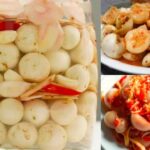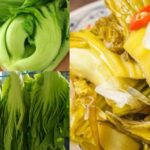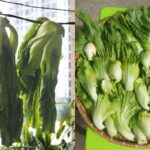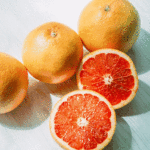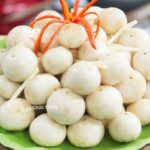Pickling Napa Cabbage: A Traditional Vietnamese Side Dish
Napa cabbage pickles are a traditional Vietnamese side dish with a refreshing sour taste, a crisp golden appearance, and a perfect pairing for fried, braised, or boiled dishes.
To achieve the perfect crispness and avoid mold, try these simple tips for pickling Napa cabbage:
Ingredient Selection and Preparation
For the best-tasting pickles, start by choosing large, fresh, and undamaged green Napa cabbage. Thicker, fresher leaves will result in crispier pickles with a more attractive color. Clean the cabbage thoroughly, removing any dirty or infested leaves to prevent bitterness or spoilage during the pickling process.
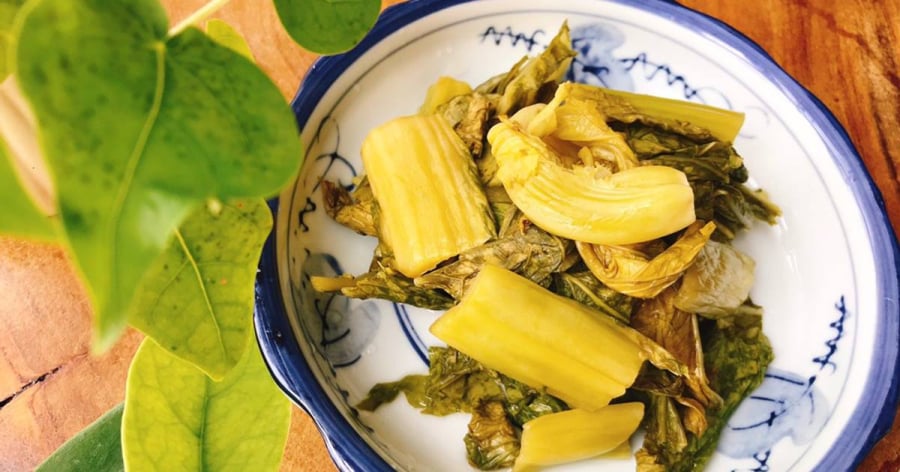
Napa Cabbage Pickles
A clever trick to make the cabbage crisper is to sun-dry it until it wilts slightly. Sun-drying causes the leaves to shrink and reduces the water content, allowing the cabbage to absorb the pickling spices better and preventing it from turning mushy. Aim to sun-dry the cabbage for around 2-4 hours, until the leaves start to wilt slightly.
Preparing the Brine
The brine is crucial to achieving the right crispness, flavor, and golden color. The ideal brine formula consists of cooled boiled water, salt, sugar, and a touch of vinegar or rice washing water. For every liter of boiled water, add one tablespoon of salt and one to two tablespoons of sugar, along with a splash of vinegar. Rice washing water is another secret ingredient that helps accelerate the fermentation process and gives the pickles a natural golden hue.
Cabbage Preparation and Pickling
Once the cabbage has wilted, cut it into approximately 5 cm long pieces, rinse them again, and let them drain. Pack the cabbage pieces into a clean and sterilized glass jar, then pour in the prepared brine to completely submerge the cabbage. Ensure the cabbage remains fully immersed in the brine to prevent mold. You can use a small plate or a bamboo stick to keep the cabbage submerged.
Storage Instructions
To prevent mold and maintain crispness, store the jar of pickles in a cool, well-ventilated area, away from direct sunlight. After two to three days, the pickles will turn a beautiful golden color and are ready to be enjoyed. In colder weather, the fermentation process may take longer, so be patient and check the pickles daily. Once the desired sourness is achieved, transfer the jar to the refrigerator to halt further fermentation.
Tips to Prevent Mold
To avoid mold, refrain from handling the pickles directly with your hands, as this can introduce bacteria. Instead, use clean chopsticks or a wooden spoon. Adding a few slices of red chili peppers and a bulb of onion to the jar can also enhance the flavor and inhibit mold growth.
By following these tips, you’ll be able to enjoy crisp, golden, and delicious Napa cabbage pickles, free from mold. These pickles will not only enhance your meals but also tantalize your taste buds and elevate the simplicity of a traditional Vietnamese family meal.
The Secret to Perfectly Crisp and Delicious White Salted Mustard Greens: A Simple Trick to Ensure They Stay Pristine and Vangiant-Free
“Pickled cabbage is a beloved Vietnamese delicacy with a crunchy, crisp texture and a delightful tang. The secret to achieving this perfect texture and pristine white appearance lies in a special ingredient added during the pickling process. This time-honored technique ensures a truly exceptional culinary experience, and we’re here to reveal the mystery behind it.”

























